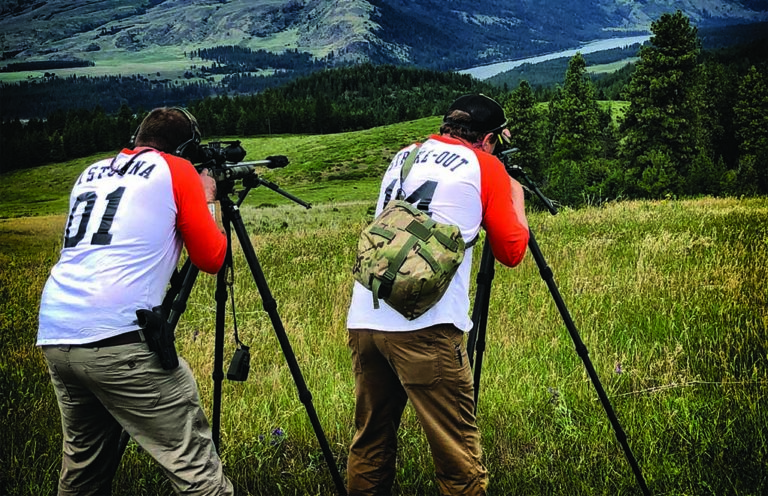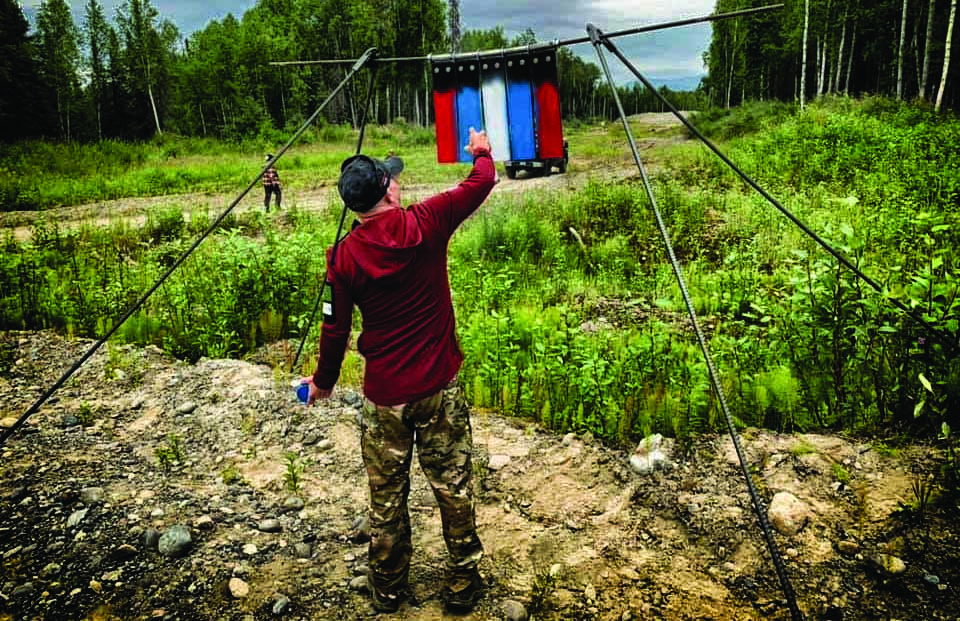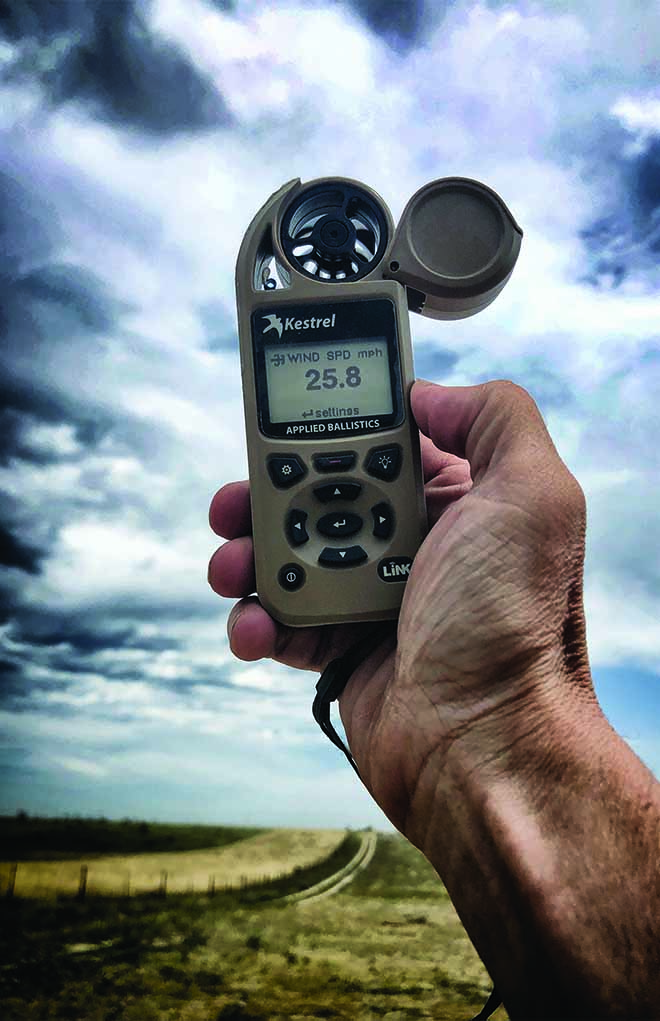
Mils? MOA? Europeans have been doing it right for years. We need to step up and join the rest of the world.
What Are The Advantages Of Working In Mils:
- Working from a base 10, mils are quicker and easier to use.
- Adjustments on Mil-based scopes are virtually as fine as MOA.
- You can dope the wind with mils without long-hand math or a ballistic calculator.
- The system is much easier to communicate through, helpful when using a spotter.
In previous articles discussing optics, I’ve gone to lengths to give the reader a buyer’s guide that goes beyond brand loyalty toward something more substantial: features.
When we move beyond the brand name, we can start talking about the defining elements of the optic—tube size, objective diameter, weight, turret design and what I believe to be one of the most critical aspects: reticles. Notice that I left out a key feature: milliradians (mils) versus minute of angle (MOA).
Before diving into this bottomless “pit of despair” regarding which one is better, let’s change the subject from “which optic is better” to “which communicates most clearly.” Every day, the Internet forums see a mils-versus-MOA debate that turns into a 10-page free-for-all. It’s the first question a lot of new shooters ask, because we no longer have one choice. Let me explain.
Communication for Success
Communication is a crucial element in order to be a successful long-range shooter. It can be shooter/spotter dialog. It can be communicating the system to a younger shooter. Or, if you’re shooting competition, speaking the same language as the other competitors might be necessary.
We have a lot of different disciplines out there: F class, benchrest and now, PRS or NRL matches. Benchrest and F class are pretty simple; they shoot known distances on fixed targets, which happen to be in MOA. However, PRS and NRL are different animals: steel targets at varying distances shot very quickly—which requires quick and concise communication.
Mils vs. MOA
Today, the military has moved to mils, while the local law enforcement teams are still largely using MOA-based scopes. Because of the military’s push in this direction, manufacturers have boosted the work done to promote mils over MOAs, which carries over into the civilian market.
The fact of the matter is, mils are quicker and easier to use. There—I said it.

A base-10 system is a much better way of doing business: 10 fingers, 10 toes. And it’s included in our money system: Mils are dimes, with scopes adjusting in pennies. I have 10 pennies per mil. Sliding a decimal point is always going to be easier to work with than fractions.
A Buyer’s Guide Approach
Sure, there are pros and cons to each unit of adjustment. It’s crucial to put both into context. So, let’s take the buying guide approach to break down how we look at this choice:
Factors to consider:
- Do you shoot with others?
- Do you shoot competition? If yes, what kind?
- Do you understand how each works with the wind?
- How high can you count? (Yes, I’m trolling a bit … but not really.)
- How do you take your reticles?
The two major debate points:
- I’m an American, and I think in inches.
- MOA is finer, because 1.047 inches are smaller than 3.6 inches.
Well, I solved the inches debate, because every American knows what a penny is and how to count to 10. The smaller-graduation debate is real if you worry about semantics, but technically, you can get scopes that adjust smaller than your standard 1/10-mil adjustments

For the most common scopes out there, there are ones that adjust in .262 MOA. A mil is .36, so it’s less than ½ the bullet width. If this is what they mean when talking mils versus MOA, I say that you can’t hold the difference. The reality on the ground reads that three clicks with a mil-based scope is 1.08 inches and four clicks with a MOA-based riflescope is 1.047 inches—hardly worth mentioning.
The Wind Differences
Wind is the great equalizer, and how we engage it will determine much of our success. As an experienced shooter recently pointed out, mil-based shooters will call the wind in .1 increments; that’s .36 inch. Most MOA-based shooters will use a full MOA or only go down to a ½ MOA. That’s not a huge difference.
Get On Target With Frank Galli:
- Mils vs. MOA: Which Is The Best Long-Range Language?
- Buying the Perfect Precision Scope
- Shooting Positions: Variety Is The Spice Of Life
- Riflescope Tracking: Why It’s Crucial To Test It
- Long-Range Shooting: Becoming Your Own Spotter
However, they don’t stop here.
In addition, MOA shooters have a couple of choices when it comes to wind solutions. Most of them use longhand math formulas that only work with a specific bullet at a pre-determined muzzle velocity. People like to interchange this formula, but it doesn’t work. I point to these shortcomings as a reason that wind has become such a trick for most shooters. It can be solved much easier using mils.
The first number in your G1 BC determines a rifle’s wind speed. I’m using Prime Ammo’s 130-grain bullet in my 6.5 CM, which means a G1 BC of .589. A muzzle velocity of more than 2,850 fps will round it up to .6, giving me a 6 mph rifle. Using this validated wind speed, I can then line up my wind calls using mils. It’s simple to check using a ballistic calculator so that it lines up as follows:
100 yards = .1
200 yards = .2
300 yards = .3
400 yards = .4
500 yards = .5
600 yards = .6
With this in mind, we can then use multiples of 6 mph to successfully dope the wind without a calculator or doing longhand math.

An 8 mph wind is a .8 hold at 600 yards. The MOA guys have the British method, which uses a base-10 mph wind—but, again, caliber-specific. In this case, we add up the multiples of 6 mph. Another example: A 12 mph wind speed would be 1.2 mils.
This system works until the bullet begins to slow down. Then, there’s a small, .1 to .2 offset the farther out we go, specific to your rifle system. The better the bullet, the higher the rifle’s mph will be.
Practical Application
In practical terms, both mils and MOA are angles, and when used as such, they can successfully hit any target. If you’re shooting on your own, it doesn’t matter.
However, as more shooters enter the long-range game, communication at the line is increasingly important to simplify this process. We can repeat the mistakes of the past, but why would we want to?
Editor's Note: This article originally appeared in the November 2019 issue of Gun Digest the Magazine.

Next Step: Get your FREE Printable Target Pack
Enhance your shooting precision with our 62 MOA Targets, perfect for rifles and handguns. Crafted in collaboration with Storm Tactical for accuracy and versatility.
Subscribe to the Gun Digest email newsletter and get your downloadable target pack sent straight to your inbox. Stay updated with the latest firearms info in the industry.

![Best Concealed Carry Guns In 2025 [Field Tested] Wilson Combat EDC X9S 1](https://gundigest.com/wp-content/uploads/Wilson-Combat-EDC-X9S-1-324x160.jpg)


![Best 9mm Carbine: Affordable PCCs [Tested] Ruger Carbine Shooting](https://gundigest.com/wp-content/uploads/Ruger-Carbine-Shooting-100x70.jpg)
![Best AR-15: Top Options Available Today [Field Tested] Harrington and Richardson PSA XM177E2 feature](https://gundigest.com/wp-content/uploads/Harrington-and-Richardson-PSA-XM177E2-feature-100x70.jpg)

HA! I began with a Burris Black Diamond scope in the ’90s that had MOA turrets and MIL DOT reticle!! Gave it away since.)
Now I use “MIL/MIL turrets and reticle in both my com[etition and hunting scopes. Only the old scope on my .22 mag. Ruger 96/22 lever gun is MOA but I never gets “dialed” anyway.
The author is correct, you can’t hold the difference between 1/10 of a mil and 1/4 MOA. Moot point.